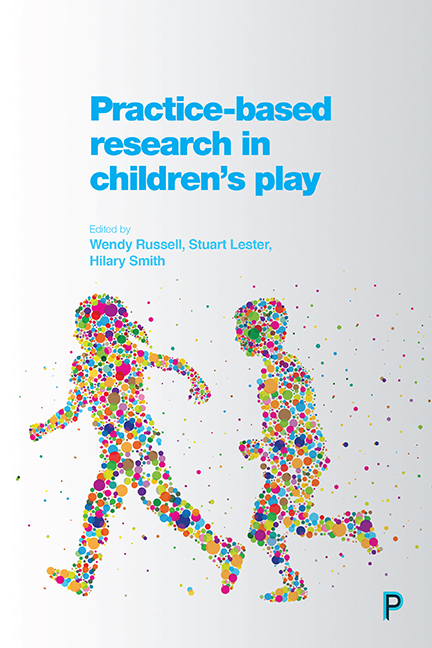Book contents
- Frontmatter
- Contents
- List of figures
- Notes on contributors
- Acknowledgements
- Foreword
- One Perspectives on play research: the practice-theory-research entanglement
- Part One Then and now: historical perspectives
- Part Two Here and there, this and that: spatial and creative perspectives
- Part Three Playfulness and wellbeing
- Closing thoughts
- Appendix: The Playwork Principles
- Index
Ten - Children, mobile phones and outdoor play
Published online by Cambridge University Press: 05 April 2022
- Frontmatter
- Contents
- List of figures
- Notes on contributors
- Acknowledgements
- Foreword
- One Perspectives on play research: the practice-theory-research entanglement
- Part One Then and now: historical perspectives
- Part Two Here and there, this and that: spatial and creative perspectives
- Part Three Playfulness and wellbeing
- Closing thoughts
- Appendix: The Playwork Principles
- Index
Summary
Introduction
This chapter examines the relationship between children and mobile phones in their outdoor play, using singular instances from an adventure playground in south west England. It is influenced by new materialist theories (Bennett, 2010a; Coole and Frost, 2010) and posthuman geographies (Whatmore, 2002; Castree and Nash, 2006; Änggard, 2015) that seek to acknowledge the vitality of material things and decentre the human as an organising force apart from ‘nature’.
Drawing on these foundations, the chapter examines the affordances (Gibson, 1979; Heft, 1988; Kyttä, 2003) offered by mobile phones for instigating and maintaining play. It does this by looking at the relationships between human and non-humans as complex and emergent assemblages or ‘ad hoc groupings of diverse elements’ (Bennett, 2010b, p 23) in which there is no central locus of control and agency is distributed. Suggesting agency as a collaborative force overcomes traditional subject/object, nature/culture binaries to draw more detailed attention to the nuanced ways in which certain formations, which might be referred to as moments of playing, come about. As such, the chapter examines instances where children and mobile phones combine to create playful occasions. These observations act as exemplars (MacLure, 2010) and are revealing in their own right; they are not intended as a basis for formulating theories or generalisable conclusions. The detailed exploration of the ways in which bodies and materials assemble and their affects activates the relationality of each event. Each example is a singular and apparently everyday moment, but as Horton and Kraftl (2006, p 262) argue, ‘banal, low-key, everyday, easily-overlooked things matter to everyone, everywhere, and perhaps especially during childhood’. Given that much of life is lived in the everyday, to ignore the mundane and banal is to ignore a huge chunk of life. These commonplace experiences of childhood live on into adulthood and even affect adult responses; indeed it is to these experiences that humans return to in times of difficulty and stress (Horton and Kraftl, 2006).
The following, from the researcher's reflective log, illustrates how bodies, movements and materials can casually entangle in everyday ways.
Two 12-year-old girls were standing outside in the playground's upper area. They were deep in conversation, one of them had her phone out and was texting while they talked. They both paused on several occasions while the one girl texted.
- Type
- Chapter
- Information
- Practice-Based Research in Children's Play , pp. 167 - 184Publisher: Bristol University PressPrint publication year: 2017



